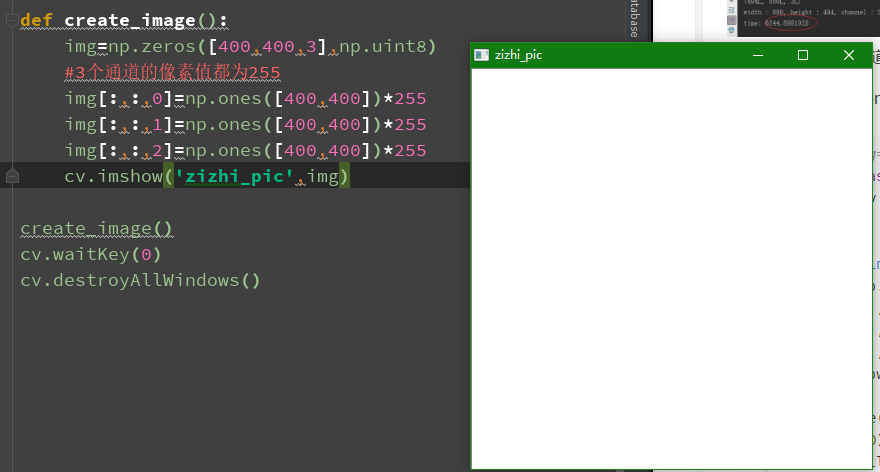numpy操作数组输出图片(二)
def inverse(image): dst=cv.bitwise_not(image) cv.imshow('reverse',dst) src=cv.imread('yiner.jpg') cv.namedWindow('before',cv.WINDOW_NORMAL) cv.imshow('before',src) t1=cv.getTickCount() inverse(src) t2=cv.getTickCount() time = (t2 - t1)*1000/cv.getTickFrequency() print('time:%s'%time) cv.waitKey(0) cv.destroyAllWindows()
一 读取一张图片,修改颜色通道后输出
# -*- coding:GBK -*- import cv2 as cv import numpy as np def access_pixles(image): print(image.shape) height=image.shape[0] width=image.shape[1] channel=image.shape[2] print(f'width:{width},channel:{channel},height:{height}') #统一修改每个像素点的值 for row in range(height): for col in range(width): for c in range(channel): pv=image[row,col,c] image[row,col,c]=255-pv cv.imshow('修改后',image) src=cv.imread('./ym.jpeg') #cv.namedWindow("原来", cv.WINDOW_NORMAL) cv.imshow('修改前',src) #毫秒级别的计时函数,记录了系统启动以来的时间毫秒 t1=cv.getTickCount() access_pixles(src) t2=cv.getTickCount() #getTickFrequency用于返回CPU的频率,就是每秒的计时周期数 time=(t2-t1)*1000/cv.getTickFrequency() print('time:%s'%time) cv.waitKey(0) cv.destroyAllWindows()
原图:
修改后的图片:

二 自制图片
- 1 3通道图片
代码
import cv2 as cv import numpy as np def create_image(): img=np.zeros([400,400,3],np.uint8) #3个通道的像素值都为255 img[:,:,0]=np.ones([400,400])*255 img[:,:,1]=np.ones([400,400])*255 img[:,:,2]=np.ones([400,400])*255 cv.imshow('zizhi_pic',img) create_image() cv.waitKey(0) cv.destroyAllWindows()

- 单通道图片
import cv2 as cv import numpy as np def create_image(): img = np.ones([400, 400, 1], np.uint8) img = img * 127 cv.imshow("one chan", img) create_image() cv.waitKey(0) cv.destroyAllWindows()
- 调用库函数来实现像素取反



